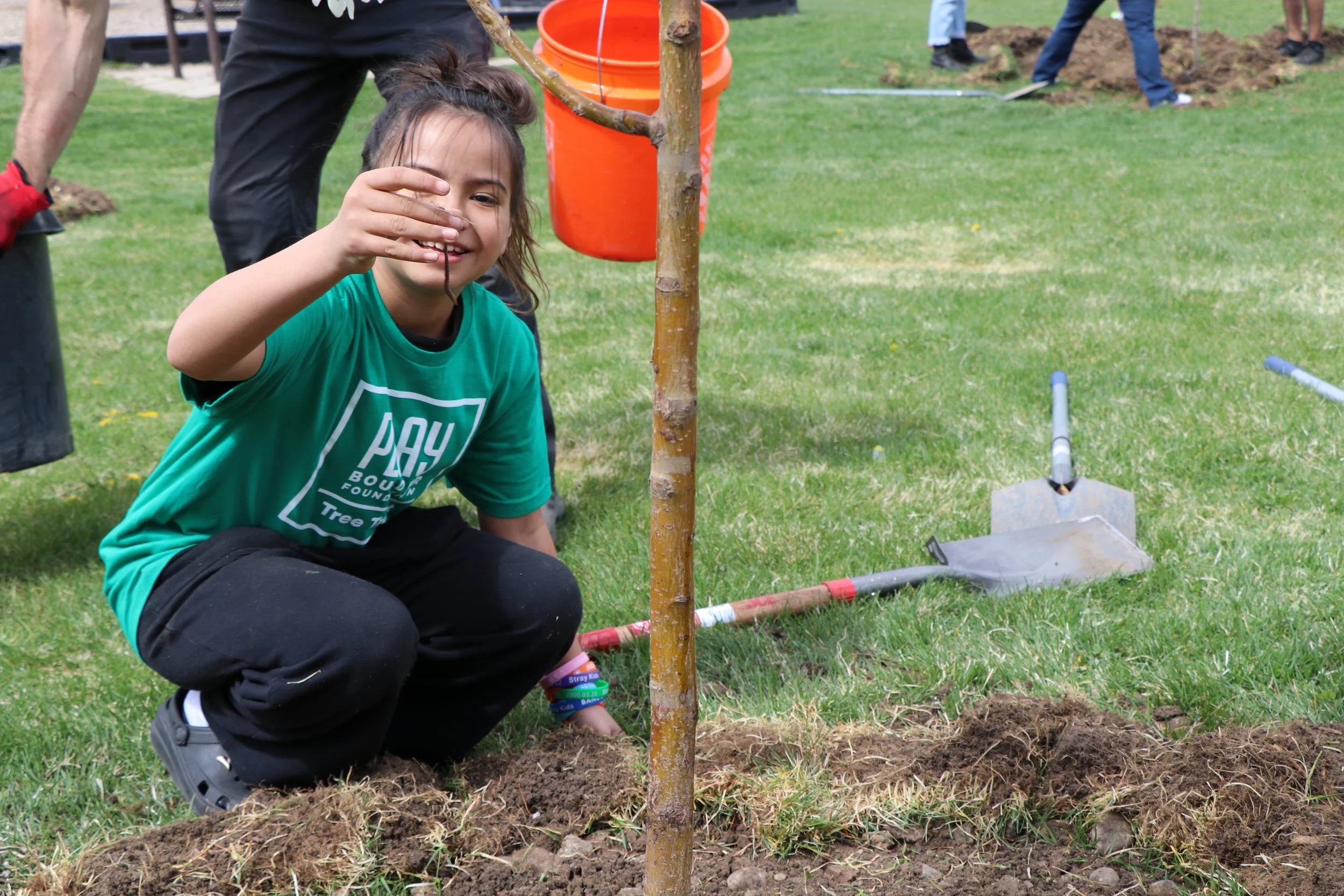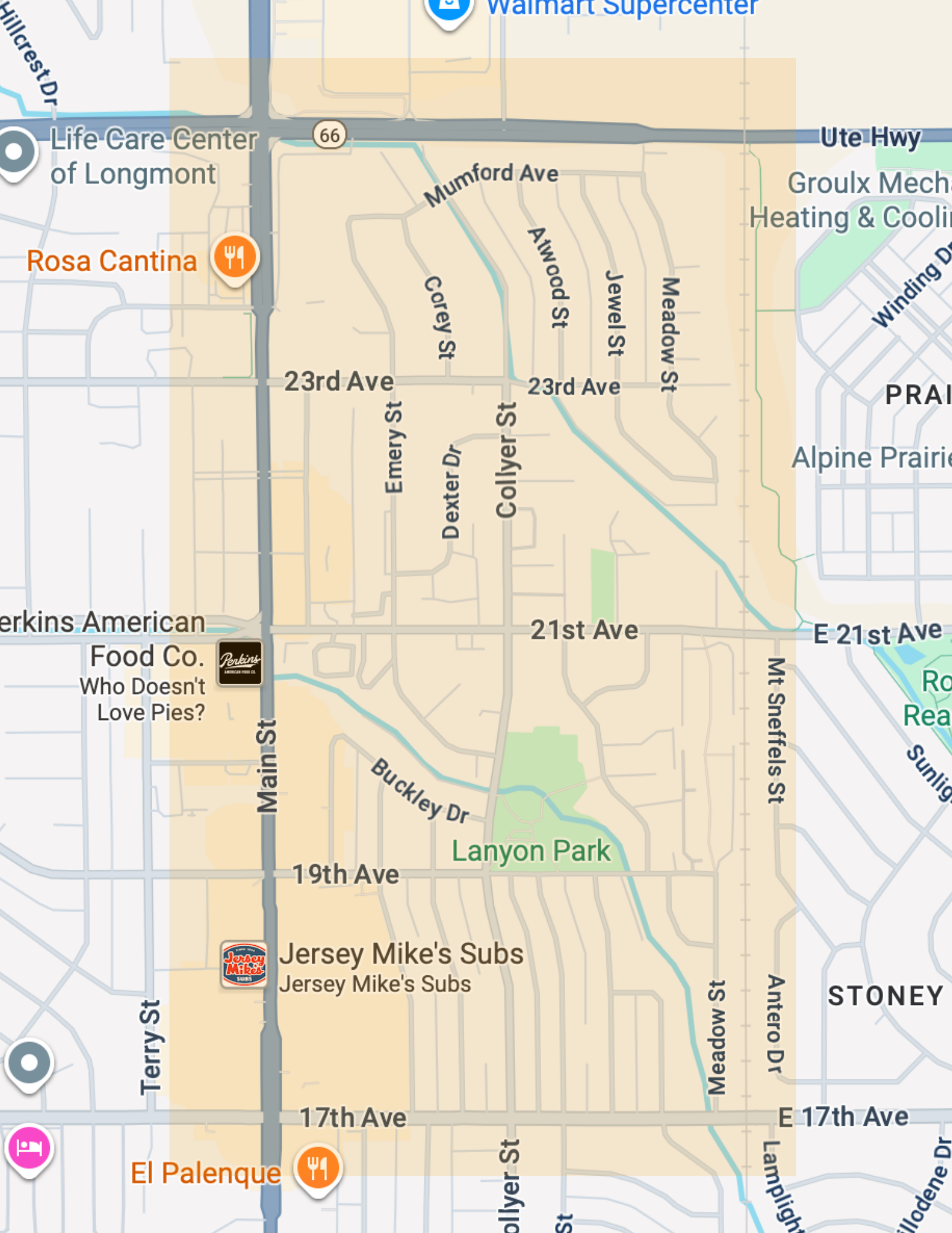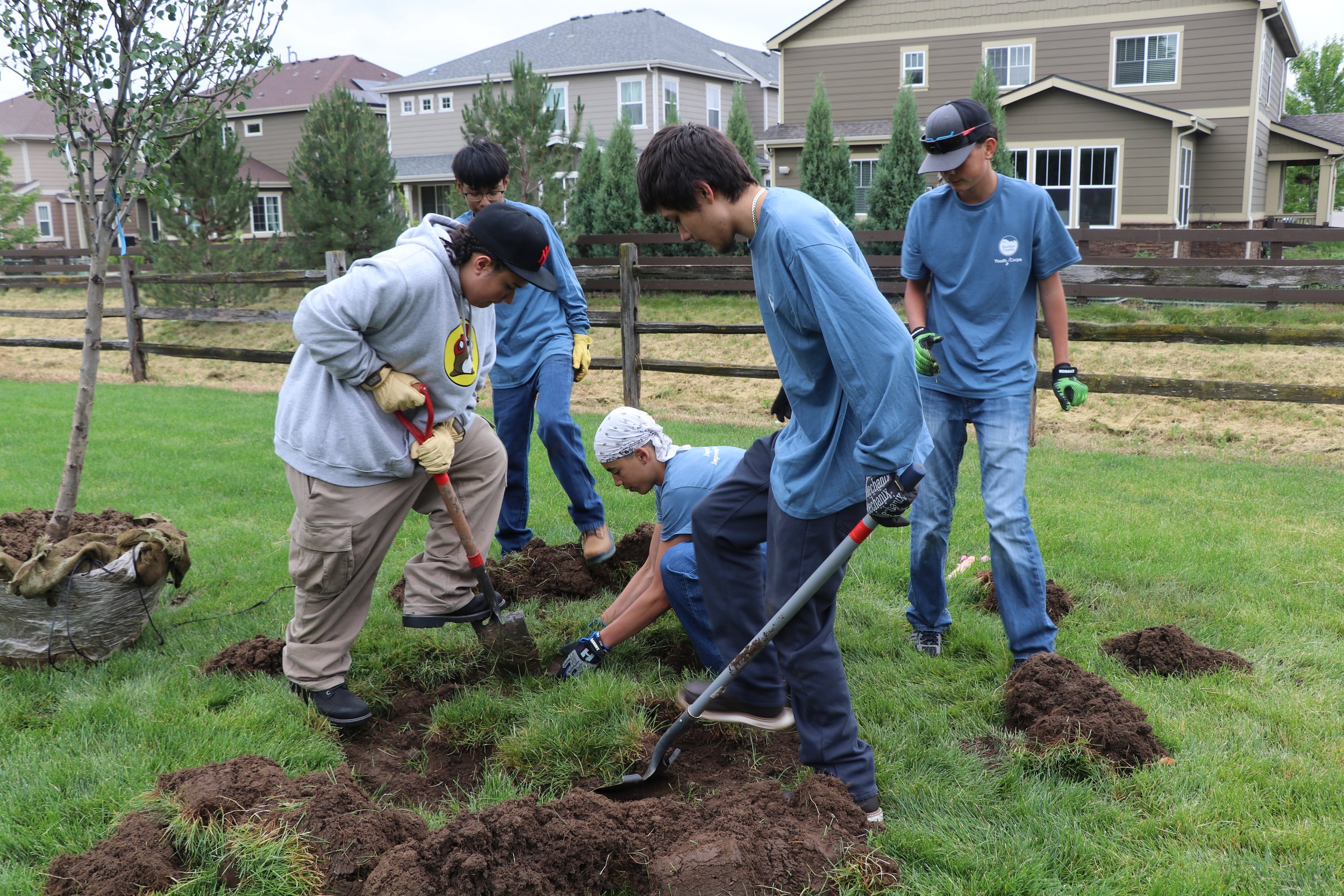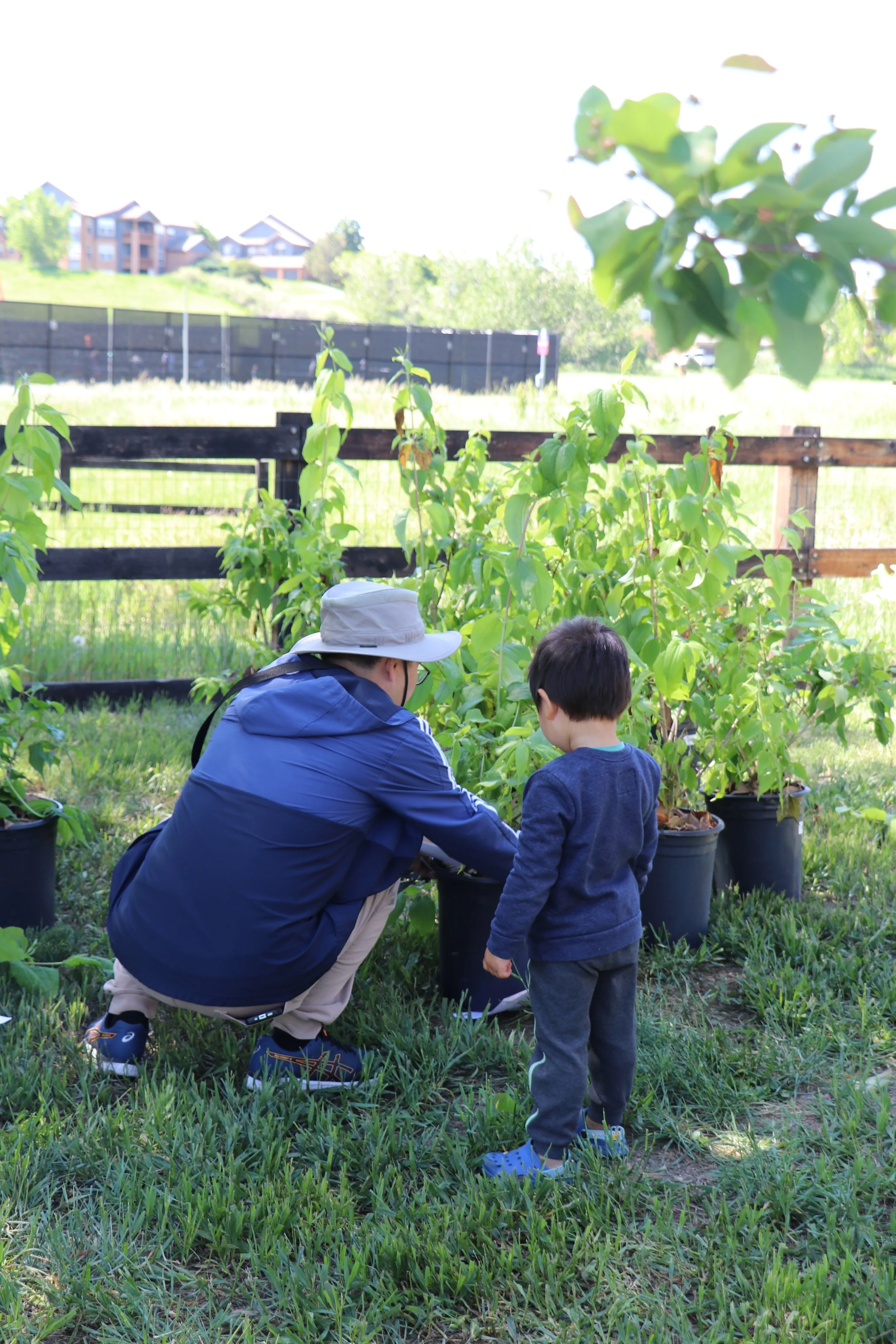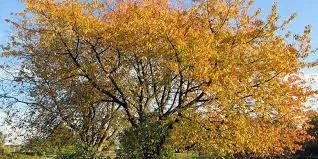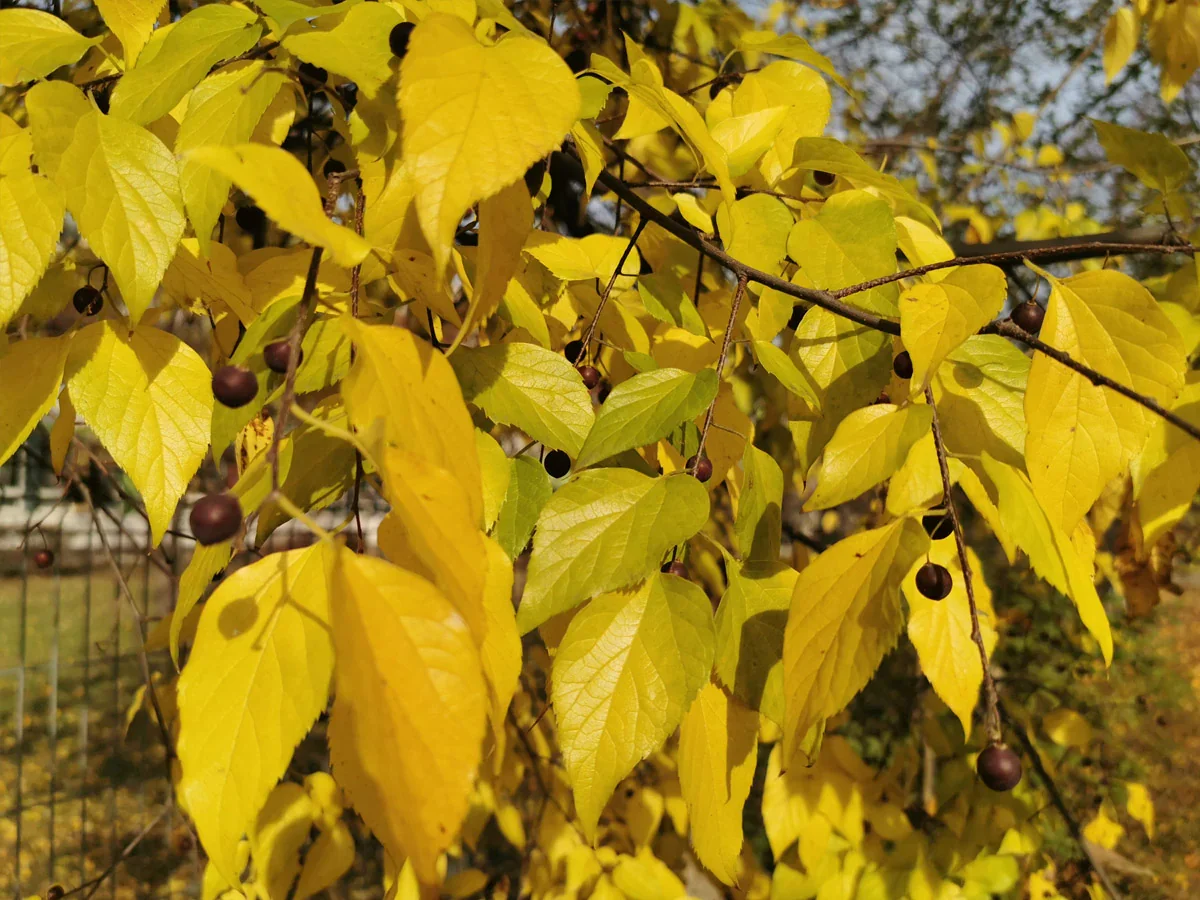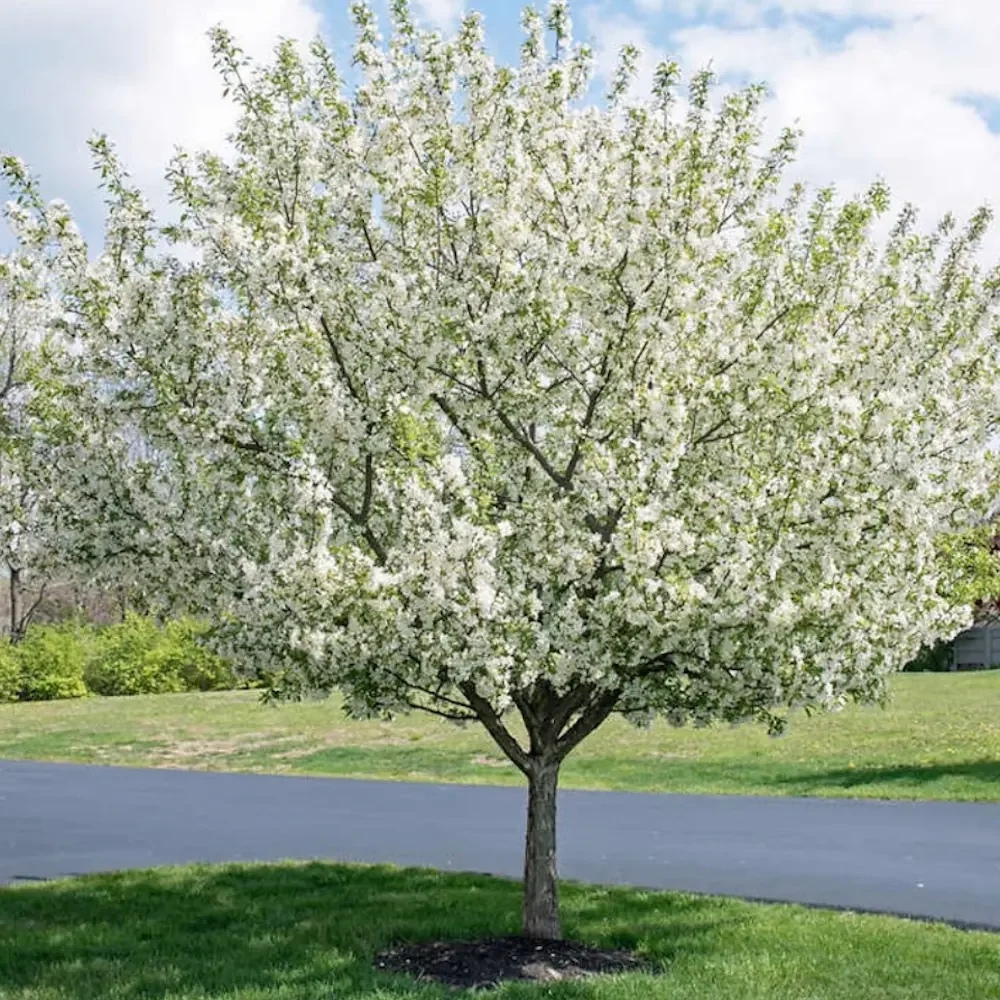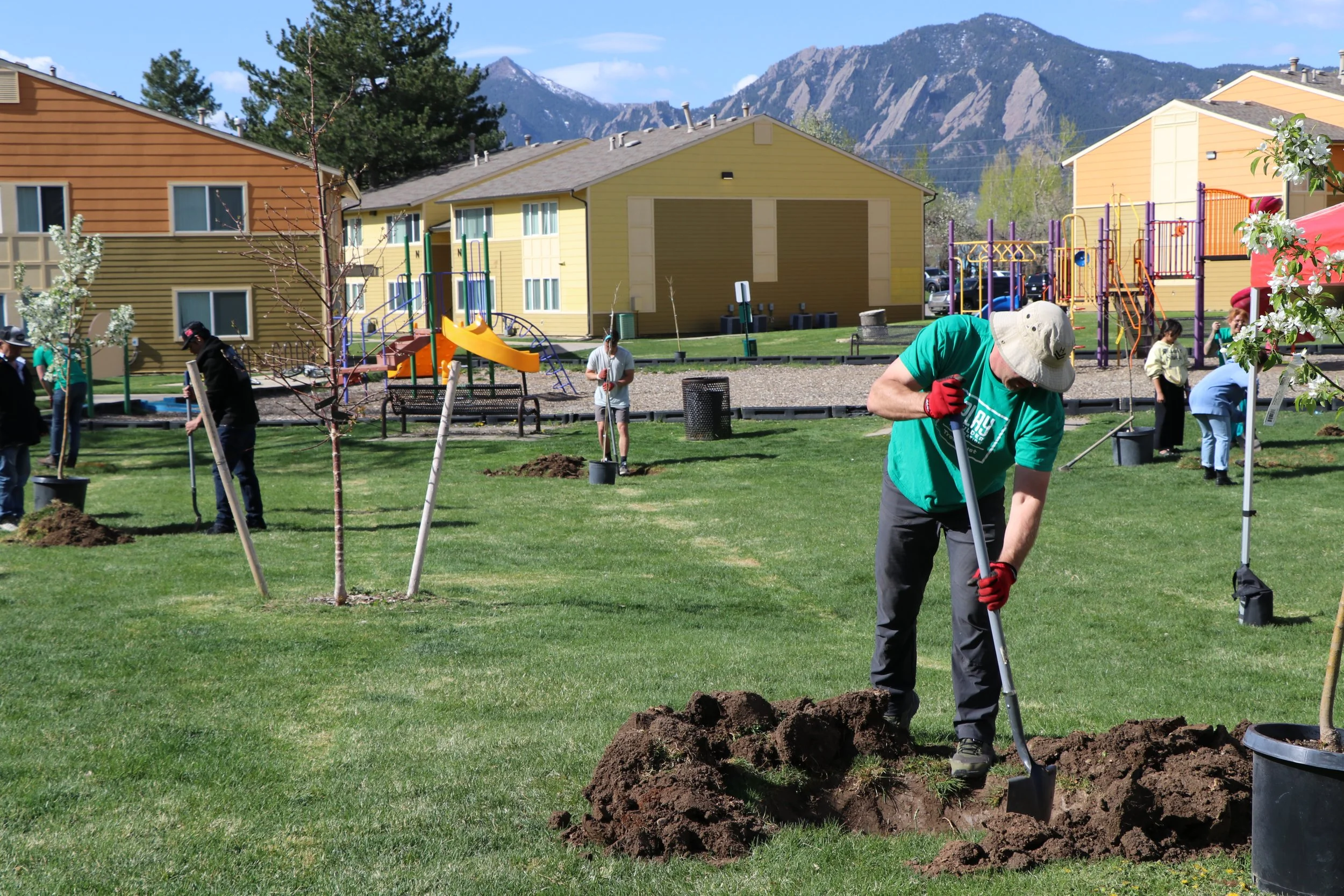To participate, residents must fill out the form linked below.
Growing Shade Longmont:
Boulder County’s Residential Urban Forestry Program
The PLAY Boulder Foundation Tree Trust, Boulder County, and the City of Longmont are proud to launch Growing Shade, an urban forestry expansion program. The initiative begins August 16, 2025, in partnership with Hover Ridge, Loomiller, and West Point Neighborhood Group Leaders Associations.
Growing Shade is a pilot program focused on increasing tree canopy in local communities to help reduce extreme heat, improve air quality, and enhance climate resilience and public health.
Who it Serves
The program will focus on Longmont’s Lanyon, Loomiller, and West Point neighborhoods, where approximately 100 trees will be planted on private residential properties — one tree per household, available on a first-come, first-served basis. Community members who rent or lease their property can participate, but they need to get permission from their property manager first.
Loomiller and West Point Neighborhood Perimeters:
Lanyon Neighborhood Perimeters:
Timeline
August 16, 2025: Launch Party
A launch event will be held at Loomiller Park, off 12th St. near the playground, from 11 a.m. to 1 p.m. Here, residents can meet the partners, sign up to receive trees, and access educational resources and program materials.
August 16 - September 5: Community Outreach
Outreach will run from August 18 to September 5 with Tree Trust and community-based organizations conducting door-to-door canvassing two days a week for three weeks. This includes distributing flyers, door hangers, and helping residents sign up. Participation will be available on a first-come, first-served basis and is limited to neighborhood residents. If you’re a resident, keep an eye out for a door hanger or sign up now!
September 27, 2025: Tree Pick-Up Event
A tree pick-up event will take place on Saturday from 9 a.m. to 12 p.m. at Longmont High School’s north parking lot (1040 Sunset St.) with Las Palmera’s breakfast burritos, educational booths, and opportunities to connect with neighbors and program staff.
If residents are unable to pick up or plant their tree, support will be provided.
Participation awards and free mulch will be distributed to all participants to support the care of their newly planted tree!
Ongoing Tree Care Support
From 2025 to 2028, residents will receive direct tree care reminders and resources, including:
General watering tips and seasonal reminders
When to install or remove tree wrap
Extra care during droughts or extreme weather
Ability to ask questions to the Tree Trust and chat with other participating residents
Workshops will be offered on general and resident-requested topics related to tree care. Residents may opt out of ongoing support communications at any time.
The Tree Trust team will also perform tree wellness checks twice a year during this 3-year timeframe to get visual confirmation that the tree is doing okay. Our team will not be entering your property, so it will be helpful if your tree is planted in a location visible from the street, if possible.
Available Trees
-
Fast Facts:
Structure: Rounded, Broad
Flowers: Not very showy
Fruit: Acorns
Fall Color: Bronze, orange
Height: Can be 55+ feet tall at maturity
Width: Crown width can be 30 to 50 feet at maturity
Hardiness: Zone 4 - 7
Sun: Full sun
Water Needs: Medium
More Details:
Swamp white oak trees can tolerate drought and wet soil once established. Tolerates compacted soils typical in Colorado.
Leaves can be present during the winter.
Due to its large height at maturity, do not plant these trees under overhead utilities.
-
Fast Facts:
Structure: Rounded, oval
Flowers: No
Fruit: Samara (helicopter seed pods)
Fall Color: Red, orange, &/or yellow
Height: Can be 35 feet tall at maturity
Width: Crown width can be 15 - 30 feet at maturity
Hardiness: Zone 3 - 6
Sun: Full to partial sun
Water Needs: Medium to Low
More Details:
The Rocky Mountain Glow Maple is a cultivar of the Bigtooth Maple, and is tolerant of dry and alkaline soils once established.
Can thrive with very little water and become a small bushy tree.
Vigorous, small-sized maple species that do well in Colorado.
-
Fast Facts:
Structure: Upright spreading, rounded to oval
Flowers: White flower clusters on 2–4" long pedicels.
Fruit: Bright red, medium fruit with firm yellow flesh and a tart, tangy flavor\
Fall Color: Yellow - Orange
Height: Can be 20 to 25 feet tall at maturity
Width: Crown width can be 10 - 20 feet at maturity
Hardiness: Zone 4-7
Sun: Full sun
Water Needs: Medium to Medium-High
More Details:
Monmorency cherries are a classic sour cherry that generally ripen in late June, or around 2 months after the spring bloom.
This species will self-fertilize, but planting having 2 or more is recommended for a better fruit crop.
This vigorous species is one of the most dependable tree fruits for our area.
-
Fast Facts:
Structure: Rounded
Flowers: No
Fruit: No
Fall Color: Yellow
Height: Can be 50+ feet tall at maturity
Width: Crown width can be 30 to 45 feet at maturity
Hardiness: Zone 3 - 8
Sun: Full sun
Water Needs: Low to Medium
More Details:
This species can tolerate drought, heat, cold, and air pollution once established.
The "Espresso" cultivar of the Kentucky Coffeetree is a male selection and does not produce seed pods, making it a popular choice for urban or residential settings
Due to its large height at maturity, do not plant these trees under overhead utilities.
-
Fast Facts:
Structure: Irregular, then Rounded at maturity
Flowers: Not very showy
Fruit: Reddish-purple, small cherry-like drupes (ripen in late summer/fall)
Fall Color: Yellow
Height: Can be 50+ feet tall at maturity
Width: Crown width can be 30 to 50 feet at maturity
Hardiness: Zone 2 - 9
Sun: Full sun
Water Needs: Low to Medium
More Details:
Hackberries can be susceptible to Nipple Gall - an aesthetic/cosmetic problem.
Can tolerate drought, clay soil, wet soil, and air pollution once established.
Due to its large height at maturity, do not plant these trees under overhead utilities.
Hackberry fruit are a great bird attractant.
Medium to fast growth rate - can reach 30 feet in a 20 year period (growth is not very uniform in early years).
-
Fast Facts:
Structure: Round, Upright
Flowers: Fragrant, white blooms in the Spring
Fruit: Produces no fruit
Fall Color: Yellow
Height: 20’-25’ feet tall at maturity
Width: Crown width can be 15’-20’ feet at maturity
Hardiness: Zones 4-8
Sun: Full sun
Soil: Acidic, loamy, well-drained
Water Needs: Drought-tolerant once established
Growth rate: Fast growing
More Details:
A dense, oval upright tree with bright green leaves that turn yellow in the fall.
Fragrant white flowers appear in mid-Spring
Fruitless variety
Pollinator-friendly
Spring Snow Crabapple
Common/Northern Hackberry
Montmorency Cherry
Swamp White Oak
Rocky Mountain Glow Maple
Espresso Kentucky Coffeetree
For more information on these trees, visit https://longmontcolorado.gov/forestry/
Why This Work is Necessary
Growing Shade was launched to increase tree canopy on private properties, where the majority of planting opportunities exist. By empowering residents to plant and care for trees, the program supports community-driven climate solutions right where people live.
Mature trees provide benefits that are essential to health and climate resilience, including:
Shade and natural cooling
Reduced energy costs
Improved air and water quality
Healthier ecosystems and biodiversity
Carbon sequestration
Reduced stress and greater physical well-being
Urban and suburban areas are especially vulnerable to extreme heat due to the urban heat island effect. Built surfaces such as asphalt and concrete absorb and radiate heat, while areas with greater tree canopy remain significantly cooler. For example, a 2024 study by CAPA Strategies and the City of Boulder found that neighborhoods with major tree loss were up to 6°F hotter than those with dense canopy. Similarly, a 2024 Climate Central study showed that Denver streets with minimal vegetation were up to 9°F hotter than shaded blocks just two miles away.
By prioritizing historically under-resourced neighborhoods and partnering with local organizations, Growing Shade ensures that the benefits of trees are equitably shared across our communities.

